Ephesus (population of around 200,000) was located on the River Cayster in Asia Minor only a few miles from the coast of the Aegean Sea. Its location made it a major trade center connecting the sea routes to the west with the land routes to the east. Ephesus was the chief communication and commercial link between Rome and the East. As a melting pot of nations and ethnic groups, it also became the major commercial center and capital of the Roman province of Asia Minor. Ephesus was 1 of the top cultural cities. Architecturally, the city was magnificent. Its main thoroughfare has been called “the most splendid street of the Roman Empire.” It was the home of an open-air theater seating 24,000. Ephesus was also the center for the worship of Artemis, also known as Diana, the goddess of fertility. The city housed the temple of Artemis which drew multitudes of worshipers. It also provided income for those who made the idols. The temple of Artemis, constructed of marble, was the largest building in the Greek world measuring 377 feet by 235 feet (about the size of a football field) and was 1 of the 7 Wonders of the Ancient World. But, interest in Artemis was not only for religious purposes. The temple fueled the economy of Ephesus through the “tourists” who visited the temple. People from all parts of the world deposited money in the bank of her temple.The Odeion, a covered theater, held about 1500 people. It was used for concerts and for meetings of the advisory council
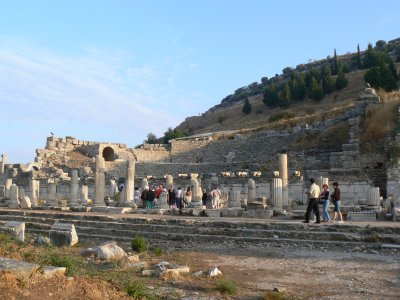
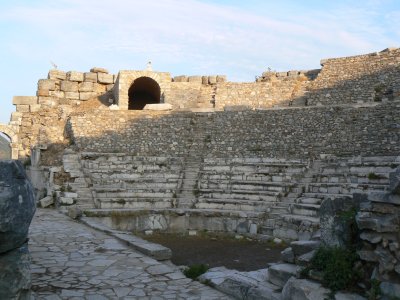
Street that runs between the Odeion and the state agora:
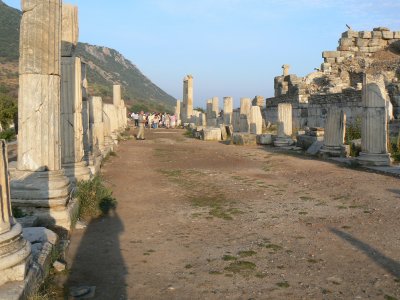
The Prytaneion, or Town Hall, had a large central square was surrounded by a protico of columns. The executive council of Ephesus met there as well as received diginitaries there. A holy fire burned in the middle of the building which housed statues of Artemis.
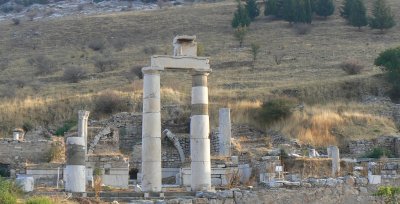
Prytaneion, or Town Hall
The Fountain of Pollius was adorned with statues representing episodes from Homer’s Odyssey
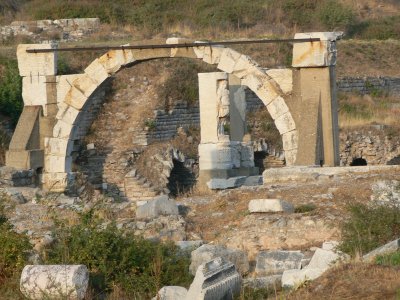
Fountain of Pollius
Crowded street leading to the Libraray of Celsus, in the background reflecting the sun, and the Agora or marketplace
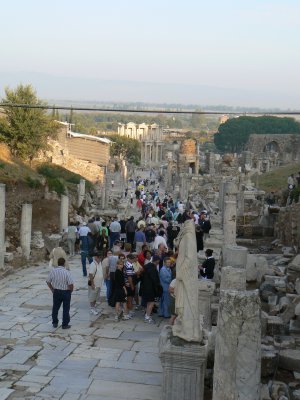
Street in Ephesus
The Goddess of Victory, Nike. Can you see the swoosh?
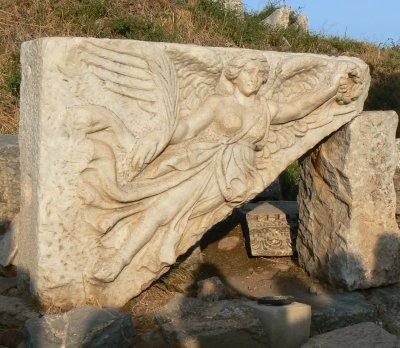
Goddess of Victory – Nike
Temple of Domitian was built for the Emperor Domitian. It was the first temple built in Ephesus for an emperor.
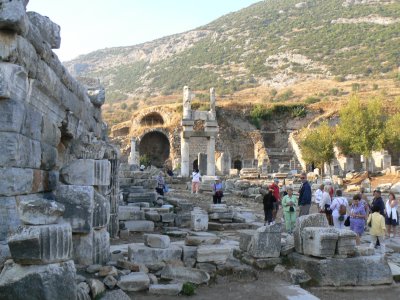
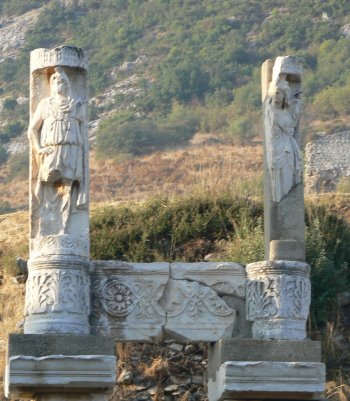
Columns adorning the Temple of Domitian
Ephesian Living
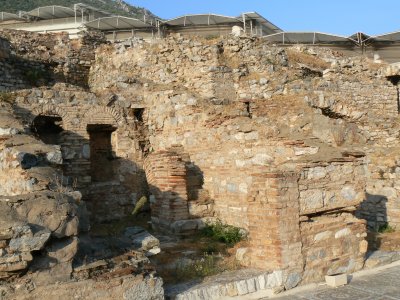
Area with wealthier homes near the Library of Celsus
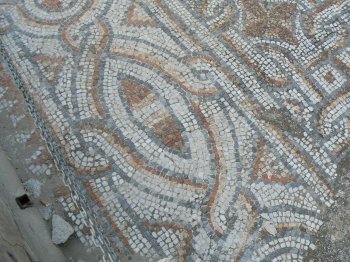
Mosaic street along the wealthier homes
Theater which housed 24,000 people built in the 3rd century BC.
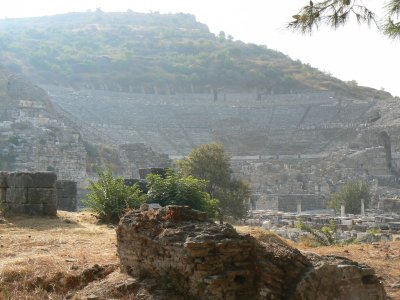
Theater with the sun coming up in the background

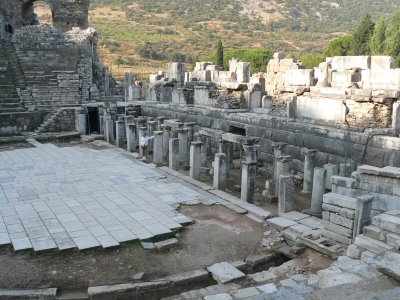
Bath house that dates back to 2nd century. In the middle were the latrines or toilets
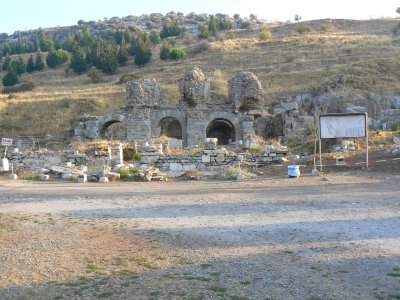
Bath house remains
Drainage Pipes
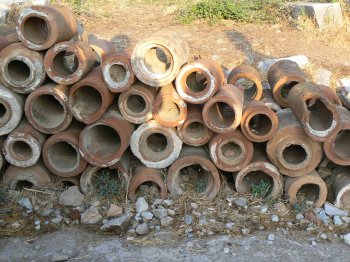
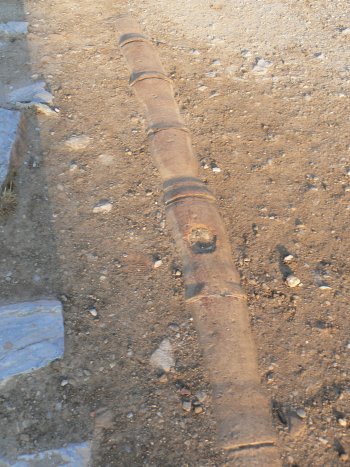
Drainage pipes
Carving in Column
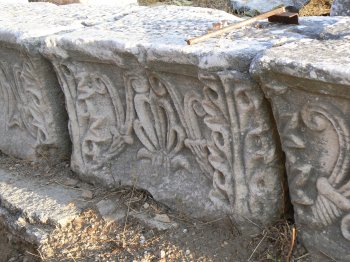
Area of Ephesus that has been buried and is awaiting excavation
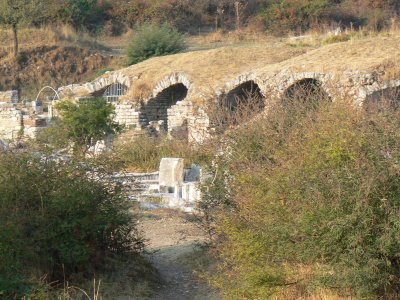
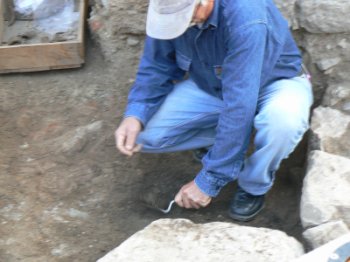
Excavator at work
